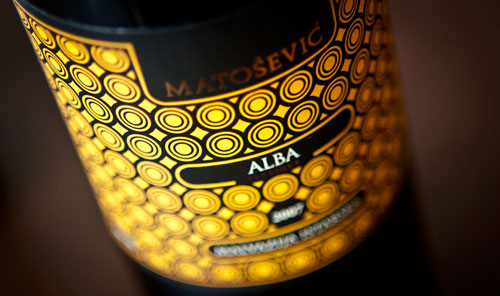
Malvazija is one of the most-produced and generally delicious white wines in Istria. Note that I just wrote Malvazija and not Malvasia. Until someone gets busy with deep DNA profiling, there is going to be a lot of confusion over these grapes. To suffice, Croatian Malvazija is usually thought to be the same as Italian Malvasia. Croatian Malvasia is grown down in the Konavle area south of Dubrovnik and is not the Italian grape.
The debate still rages on this though and genetics might prove that it’s ultimately the opposite of assumed perceptions, but whatever the case, this Istrian grape and the Dalmatian one are definitely different grapes as any winemaker in Croatia will tell you. This is all despite the fact they’re both often spelled as Malvasia when exported or sent to compete in international competitions.
Matošević has been around for a few years now and Ivica’s wines have been met quite favorably by wine critics and drinkers alike. We’ve had a number of them over the years and the reason they’re well-liked is obvious: they’re good wines with unique character.
The Malvasija Alba Barrique follows along in being a quality one, albeit one that’s geared more towards the international market. At 13.5% alcohol, it’s definitely a strong wine and this comes across immediately with a potent body when first opened. The nose presents kaffir lime as well as a light watercress aromas. As you taste the body, it starts out too oaky, but the finish is a bit mineraly, nice, and clean.
As it breathes more, hazelnut and vanilla elements develop from the oak and it mellows overall. After about two hours of decanting, it breaths to the point where the nose takes buttery/popcorn qualities and is downright pleasant.
It’s a great wine for pork, but again, if you’re leaning towards less oak in whites these days, it might not be for you unless of course you’re willing to decant it for awhile. If you can get your hands on it, the Robinia or the Antiqua offer up something that builds upon this quality wine even more as they’re partially aged in acacia barrels and it adds an interesting dimension that’s really unlike most any white you’ll have tasted.
I loved this wine, although you are right that the style is quite international and the oak is upfront.
For your interest, here is the link to my review, which is of the 2008: http://www.themorningclaret.com/2011/matosevic-alba-barrique-2008/
I have a bottle of the Grimalda (http://matosevic.com/en/vina/linija-grimalda/grimalda-bijelo) in the cellar, following a recent trip to Enoteca Terre in Split. Looking forward to trying that.
Simon.
Hi Simon, good to hear from you and yes, the oak wasn’t quite to my tastes, but I’ve definitely been drifting from heavily-oaked wines in recent years. They still work for some, so if that’s what they like, then this will most likely appeal to them.
Enjoyed your review of the wine as well and look forward to the review of the Grimalda.